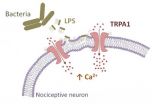(Press-News.org) A new survey conducted by the University of Copenhagen and the World Health Organization (WHO) is highlighting the role of schools in work to promote health and prevent disease.
"Children in Scandinavia generally have healthy teeth and gums, largely on account of dental care in schools for all children, the arrival of fluoride toothpaste on the market, a healthy lifestyle and high living standards. But the situation in the poorest countries of the world is very different to that in Scandinavia. However, it is positive to note that the WHO's Health Promoting Schools Initiative are gaining ground at global level, and that they are gradually wiping out the social inequities in dental health," says Poul Erik Petersen, Professor at Department of Odontology at the University of Copenhagen, and a Global Health Specialist.
From Myanmar to Madagascar
"We have collected data based on questions about health and dental care from 61 countries that run health programmes in schools. Our findings reveal that those schools that have set up healthy school environments – and which offer all children education in dental health and disease prevention – are generally well-placed to set children on a path to a healthy lifestyle throughout their lives, with regard to issues such as diet, physical exercise, tobacco, alcohol and HIV control."
Around 60 per cent of the countries that took part in the study run formalised teaching in how to brush teeth, but not all countries have access to clean water and the necessary sanitary conditions. This constitutes a major challenge for the health and school authorities in Asia, Latin America and Africa in particular.
"Countries in these regions are battling problems involving the sale of sugary drinks and sweets in the school playgrounds. Selling sweets is often a source of extra income for school teachers, who are poorly paid," explains Poul Erik Petersen.
He continues: "This naturally has an adverse effect on the children's teeth. Many children suffer from toothache and general discomfort and these children may not get the full benefit of their education."
The biggest challenges to improved dental health in low-income countries are a lack of financial resources and trained staff. Schools in the poorest countries therefore devote little or no time to dental care, and they similarly make only very limited use of fluoride in their preventative work. Moreover, the healthy schools in low-income countries find it harder to share their experience and results.
Social inequality is a serious problem
Social inequality in dental health and care is a serious problem all over the world:
"However, inequality is greater in developing countries where people are battling with limited resources, an increasing number of children with toothache, children suffering from HIV/AIDS and infectious diseases – combined with a lack of preventive measures and trained healthcare staff," says Poul Erik Petersen, before adding:
"Even in a rich country like Denmark, we see social inequalities to dental care, despite the fact that dental health here is much improved among both children and adults. The socially and financially disadvantaged groups of the population show a high incidence of tooth and mouth complaints compared with the more affluent groups."
The Danish model for municipal dental care was principally built up in the 1970s and 1980s. The intention is to assure good dental health for all children and young people, irrespective of their social background. The long-term effect is now becoming apparent among adults and elderly people, who have maintained a good mouth, healthy teeth and gums, and a strong quality of life. Unfortunately, not all countries in the world are able to operate a school system of this kind."
INFORMATION:
The study has been published in Community Dental Health. Contact professor Poul Erik Petersen to read the full article.
Contact:
Professor Poul Erik Petersen
Mobil: 24 46 35 98
Dental care in school breaks down social inequalities
2014-02-10
ELSE PRESS RELEASES FROM THIS DATE:
Threatened eels disappear in the deep on their way to the Sargasso Sea
2014-02-10
When the threatened European eels cross the Atlantic Ocean to get to the Sargasso Sea to spawn, they swim in deep water. But this does not protect them from predators, researchers from the University of Southern Denmark report: Even in deep water the eels are hunted and eaten.
The European eel is in decline, and all over the world biologists are struggling to map its mysterious life cycle in order to bring its numbers back up. One of the great puzzles is why and how the eel each year travels thousands of kilometers to get to the Sargasso Sea to spawn.
A European monitoring ...
The chemistry of love: Valentine's Day science from ACS Reactions
2014-02-10
WASHINGTON, Feb. 10, 2014 — Love has inspired timeless songs and sonnets — not to mention a few less-than-timeless romantic comedies. Now the chemistry of love is the subject of the latest episode of the American Chemical Society's Reactions YouTube series (formerly Bytesize Science). Just in time for Valentine's Day, the video is available at http://youtu.be/bp7Ydv5wAPk.
The video explains how feel-good neurotransmitters like dopamine and oxytocin fuel lifelong pair bonds in prairie voles, which — along with humans — are the mammalian kingdom's leading monogamists. "If ...
Sometimes the average just isn't good enough
2014-02-10
This news release is available in German. When averaging is good and when it's not
Usually averaging is a good thing that can make life a lot easier. For example, when you eat out with a group of friends and it comes to paying. If everyone had a meal and a drink and you split the bill total by the number of people, everyone will pay pretty close to what they would have paid for their individual meal and drink. However, if some people had a starter, a steak for main, a dessert and champagne while you had spaghetti and a soft drink, you will feel pretty much ripped ...
Oil composition boost makes hemp a cooking contender
2014-02-10
Scientists at the University of York today report the development of hemp plants with a dramatically increased content of oleic acid. The new oil profile results in an attractive cooking oil that is similar to olive oil in terms of fatty acid content having a much longer shelf life as well as greater heat tolerance and potentially more industrial applications.
Researchers in the Centre for Novel Agricultural Products (CNAP) in the Department of Biology at York say that high oleic acid varieties are a major step towards developing hemp as a commercially attractive break ...
New therapy for personality disorders proven more effective than other major treatments
2014-02-10
A large scale randomized control trial, just released in the American Journal of Psychiatry (the official journal of the American Psychiatric Association) shows Schema Therapy to be significantly more effective than two major alternative approaches to the treatment of a broad range of personality disorders (avoidant, obsessive compulsive, dependent, paranoid, histrionic, and narcissistic). Schema Therapy resulted in a higher rate of recovery, greater declines in depression, greater increases in general and social functioning and had a lower drop out rate. The results also ...
EHR-based screening program for AAA cuts the number of at-risk men by more than half
2014-02-10
PASADENA, CALIF., Feb. 10, 2014 — A screening program for abdominal aortic aneurysms, integrated into an electronic health record, dramatically reduced the number of unscreened at-risk men by more than 50 percent within 15 months, according to a Kaiser Permanente study published today in the Journal of Vascular Surgery. An abdominal aortic aneurysm is a balloon-like bulge in the aorta, which – if ruptured – can result in death. It is estimated that more than one million Americans are living with undiagnosed AAA, according to the Society for Vascular Surgery.
Since 2005, ...
Is height important in matters of the heart? New study says yes
2014-02-10
Is height important in matters of the heart? According to new research from Rice University and the University of North Texas, the height of a potential partner matters more to women than men, and mostly for femininity and protection.
The study, "Does Height Matter? An Examination of Height Preferences in Romantic Coupling," was conducted in two parts. Part one, which used data from the Yahoo! personal dating advertisements of 455 males (average height of 5 feet 8 inches and average age of 36 years) and 470 females (average height of 5 feet 4 inches and average age of ...
Keep romance alive with double dates
2014-02-10
Austin – February 10, 2014 – Going on a double date may be more effective at reigniting passion in your own relationship than the classic candlelit dinner for two. According to new research, striking up a friendship with another couple in which you discuss personal details of your life will bring you closer to your own partner.
"Passionate love is one of the first dimensions of love to decrease in couples over time as the newness of a relationship begins to wane," says Keith Welker, a doctoral student at Wayne State University. "Relationships have widely been thought ...
Study suggests ways to improve common furniture fire test
2014-02-10
The bench-scale test widely used to evaluate whether a burning cigarette will ignite upholstered furniture may underestimate the tendency of component materials to smolder when these materials are used in sofas and chairs supported by springs or cloth, National Institute of Standards and Technology (NIST) and American University researchers report in a new study.*
The study comes as regulations and methods for evaluating the likelihood that soft-furniture materials will ignite are undergoing scrutiny. In November 2013, California removed an open-flame test from its furniture ...
New pain target for bacterial infections
2014-02-10
Components in the outer wall of bacteria directly activate pain sensors, triggering immediate pain and inflammatory responses. This finding by a multinational team of researchers led by Professor Karel Talavera (KU Leuven, Belgium) and Professor Félix Viana (Institute of Neuroscience, Spain) sheds new light on pain associated with bacterial infections and reveals a new target for drugs designed to treat them.
Bacterial infections are a global health problem and their treatment remains a major challenge to modern medicine. Infections of Gram-negative bacteria, in particular, ...




